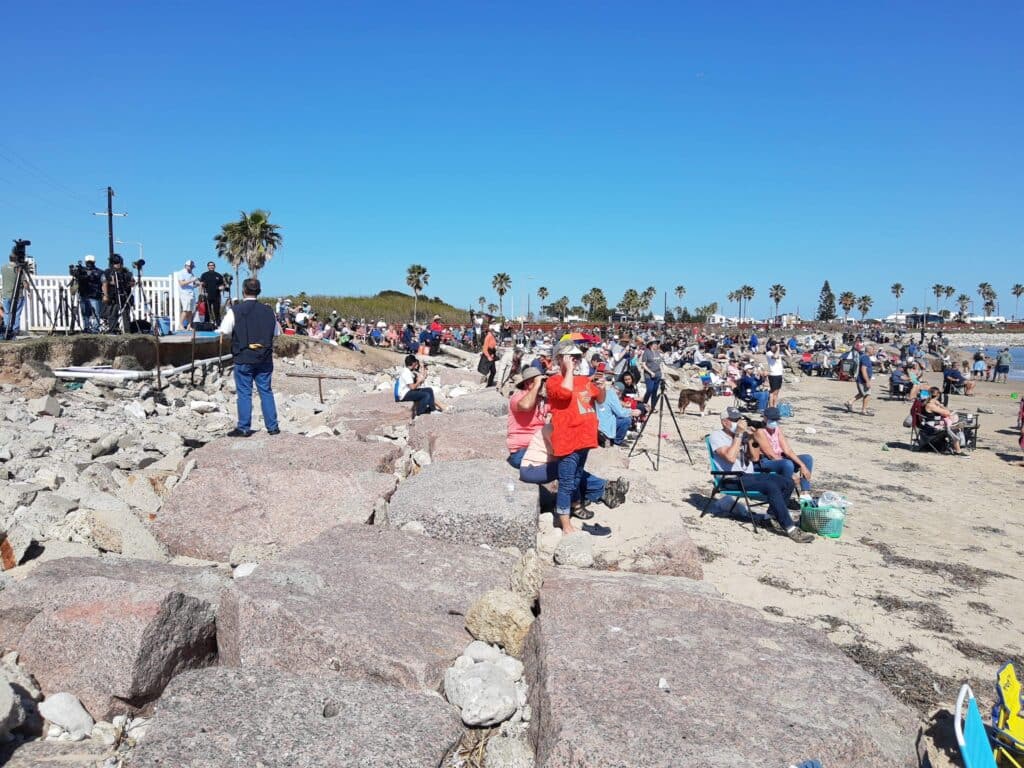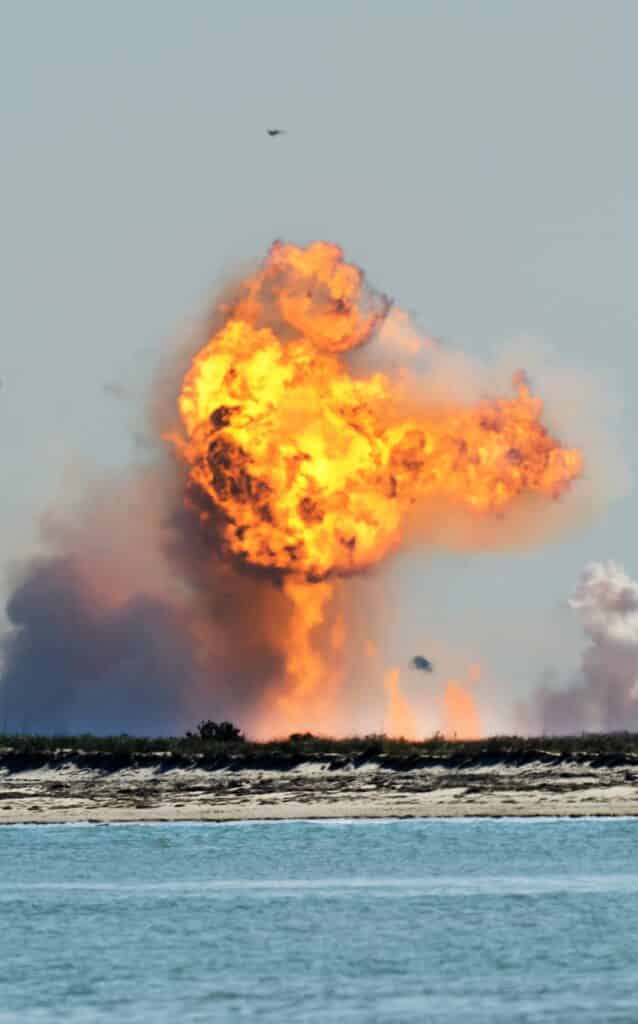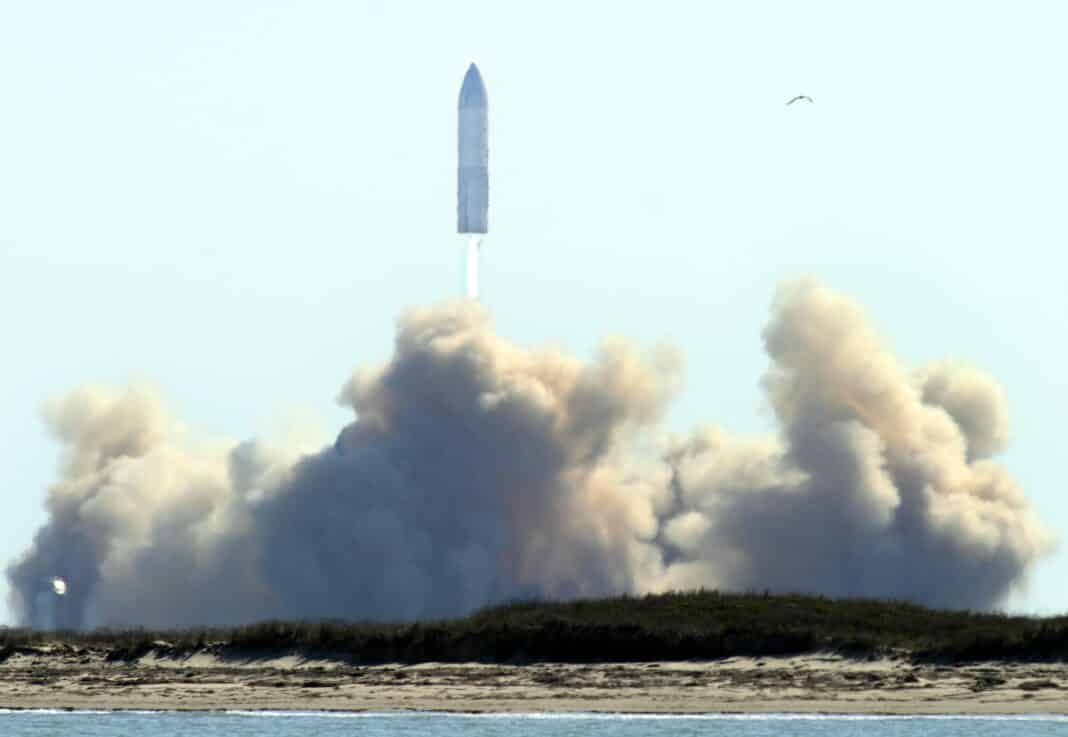SpaceX’s Starship SN9 prototype lifted off from Boca Chica Tuesday at 2:35 p.m. for a flight lasting nearly 6.5 minutes but ending in a fiery crash rather than the hoped for gentle touchdown.
It was the second high-altitude flight for a Starship prototype and a near repeat of the Dec. 9 flight of the company’s SN8 prototype, which rose to 41,000 feet before descending under control but coming down too fast and exploding. SpaceX founder and CEO Elon Musk nonetheless declared that flight a success thanks to the amount and quality of data collected during the flight. Unlike the SN8, which was nearly vertical when it crashed, the SN9 hit the earth at a sharp angle to the landing pad.
As of press time there was no word from Musk on how he rated the SN9’s flight, the goal of which was to attain approximately 33,000 feet before making an aerodynamically controlled, power-off, belly-flop-style descent and then reigniting at least one engine for landing. As with the SN8, all but the last element of the mission appeared to succeed.
The stainless-steel-clad rocket, 165 feet tall and 30 feet in girth, could be seen easily from many miles away against the clear blue afternoon sky. The flight was originally planned for Jan. 28 but was held up when the Federal Aviation Administration declined to grant a launch license. At first it wasn’t clear what issues the FAA had, though Musk early that afternoon fired off an angry tweet.
“Unlike its aircraft division, which is fine, the FAA space division has a fundamentally broken regulatory structure,” he wrote. “Their rules are meant for a handful of expendable launches per year from a few government facilities. Under those rules, humanity will never get to Mars.”
The goal of SpaceX’s Starship development program at Boca Chica is to achieve large-scale production of spacecraft capable of carrying humans to the Moon and Mars we well as destinations on Earth. Later in the afternoon on Jan. 28 the FAA produced this statement in response to a reporter’s query: “We will continue working with SpaceX to resolve outstanding safety issues before we approve the next test flight.”

Tuesday morning, the FAA offered this clarification:
“Prior to the Starship SN8 test launch in December 2020, SpaceX sought a waiver to exceed the maximum public risk allowed by federal safety regulations. After the FAA denied the request, SpaceX proceeded with the flight. As a result of this non-compliance, the FAA required SpaceX to conduct an investigation of the incident. All testing that could affect public safety at the Boca Chica, Texas, launch site was suspended until the investigation was completed and the FAA approved the company’s corrective actions to protect public safety. The corrective actions arising from the SN8 incident are incorporated into the SN9 launch license.”
In other words, SpaceX took care of the issues the FAA had raised about the SN8 flight, clearing the way for the SN9 launch.

The company’s Starship SN10 prototype, which was rolled out of the production complex and down S.H. 4 to the launch area on Jan. 29, did not appear to sustain damage as a result of the SN8’s bad landing. The appearance of SN10 on the launch pad before the SN9 had launched signals SpaceX’s accelerated prototype production pace. John Insprucker, a retired Air Force colonel and aerospace engineer now working for SpaceX, who narrated the SN9 flight on the company’s YouTube livestream, said SN10 is undergoing preparations for a test flight “later this month.”
SN11 and subsequent prototypes are under construction at Boca Chica, as is the first Super Heavy, the massive 28-engine booster rocket the company plans to put under Starship to get it into Earth’s orbit and beyond.
Insprucker described Tuesday’s flight as another successful demonstration of Starship’s ability to transition propellant to the vehicle’s “header tanks” for landing, despite the crash.
“The subsonic reentry looked very good and stable like we saw … this last December, so we’ve got a lot of good data on flap control,” he said. “Again, we’ve just got to work on the landing a little bit. … A reminder, this is a test flight, the second time we’ve flown Starship in this configuration. We’ve got a lot of good data, and the primary objective to demonstrate control of the vehicle in subsonic reentry looked to be very good.”





